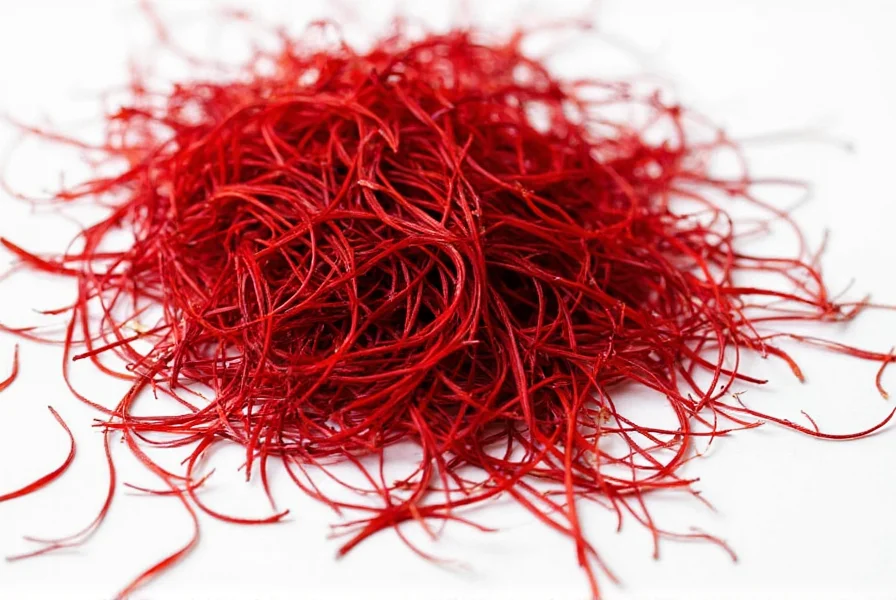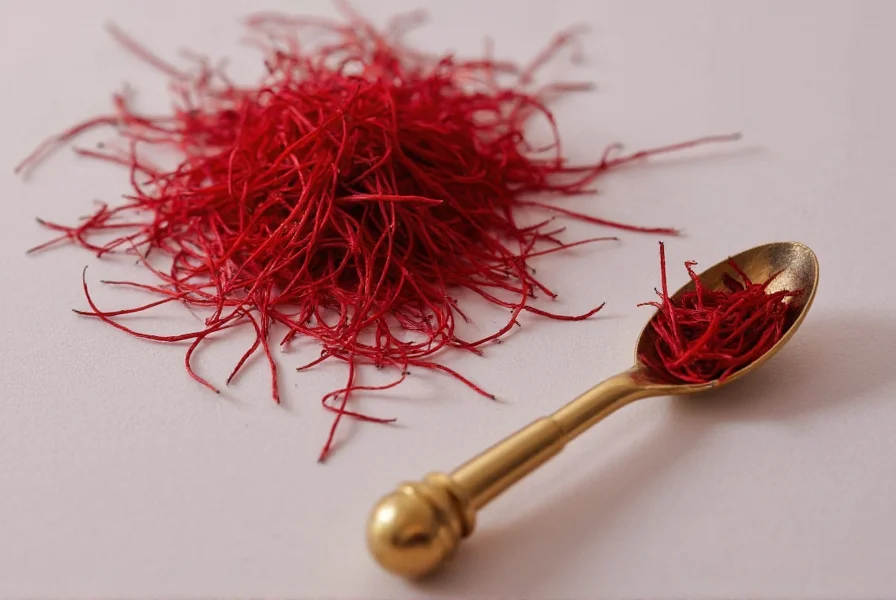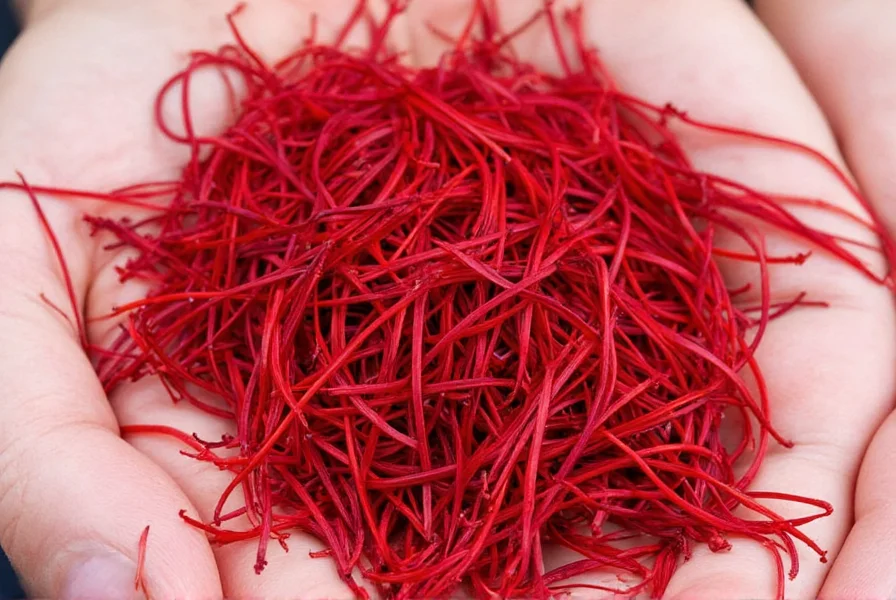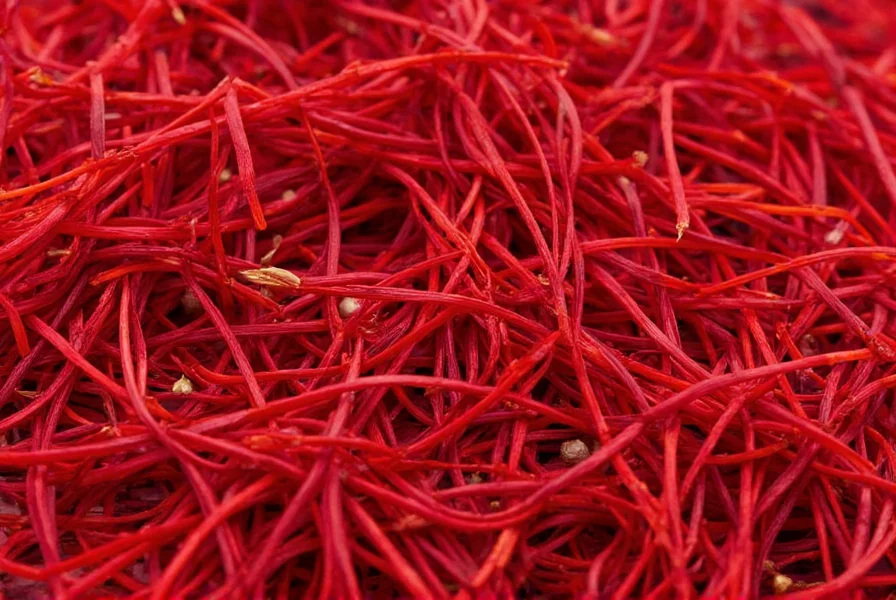Saffron is the world's most expensive spice, costing up to $50 per gram. This high price is due to its labor-intensive harvesting process: it takes approximately 75,000 saffron flowers to produce just one pound of dried saffron, with each delicate red stigma hand-picked during a short annual blooming window. Below, we break down why saffron is so costly, how to use it effectively, and how to identify authentic quality threads.
What Exactly Is Saffron?
Saffron is derived from the Crocus sativus flower, also known as the saffron crocus. Each flower blooms only once a year and produces just three crimson stigmas—these are handpicked, dried, and transformed into the precious spice we know today.
The Botanical Wonder Behind the Spice
Belonging to the iris family (Iridaceae), the saffron crocus is not your average garden bloom. It's sterile and must be propagated manually, which already hints at its exclusivity. Since it doesn't produce viable seeds, farmers have to rely on corms (bulb-like structures) to grow new plants.
Why Is Saffron So Expensive?
Now let’s tackle the big question: why does saffron cost more per weight than gold or truffles? Here’s the breakdown:
1. Labor-Intensive Harvesting
Each saffron thread must be hand-plucked from the center of the flower—a painstaking process that can take up to 75,000 blossoms to yield just one pound of dried saffron!
2. Seasonal & Time-Sensitive
Saffron flowers bloom only once a year, typically in autumn. And when they do, they must be harvested within a few hours of opening, usually early in the morning while dew is still present. Missing the window means losing the entire yield.
3. Drying Process Adds Value
Once picked, the stigmas must be dried carefully—either by warm air, fire, or traditional methods like using hot plates—to preserve flavor and color. This step is crucial and demands experience to prevent spoilage.
4. Limited Growing Regions
High-quality saffron thrives only in specific climates—most notably Iran, India (Kashmir), Greece (Krokos), and Spain (La Mancha). These regions have ideal dry summers and mild winters that contribute to the spice’s potency.

How to Use Saffron in Cooking
Saffron brings a unique aroma, golden hue, and subtle earthy-floral flavor to dishes. It's often soaked in warm liquid before use to release its essence. Let’s dive into how to get the most out of this exotic spice.
Top Tips for Using Saffron
- Soak Before Use: Crush the threads slightly and soak them in warm water, broth, or milk for 15–30 minutes to maximize flavor and color extraction.
- Avoid Direct Heat: Don’t throw saffron directly into a hot pan—it can burn the delicate compounds and ruin the flavor.
- Add Early in Cooking: Introduce saffron near the beginning of cooking to allow flavors to infuse thoroughly, especially in rice or stews.
- Pair with Complementary Flavors: Saffron pairs beautifully with seafood, citrus, butter, cream, and aromatic spices like cardamom and cinnamon.
Popular Dishes Featuring Saffron
| Dish | Origin | Key Ingredients | Saffron Role |
|---|---|---|---|
| Paella Valenciana | Spain | Rice, chicken, rabbit, seafood | Colors and perfumes the rice |
| Bouillabaisse | France | Fish, shellfish, herbs | Enhances broth depth |
| Risotto alla Milanese | Italy | Rice, bone marrow, Parmesan | Lends iconic yellow hue and richness |
| Kesar Pista Kulfi | India | Milk, pistachios, sugar | Provides luxury and floral notes |

Buying Guide: How to Choose Quality Saffron
Buying authentic, high-quality saffron can be tricky. Here’s how to spot the real deal and avoid imitations or low-grade products.
Look for These Indicators of Quality
- Color: True saffron threads are deep red with a slight orange tip. If they’re bright red or uniformly colored, they might be dyed.
- Texture: Genuine saffron feels dry but pliable. If it feels brittle or powdery, it may be old or adulterated.
- Smell: High-quality saffron has a rich, floral, honey-like fragrance—not bitter or medicinal.
- Taste: When chewed, saffron should offer a slightly sweet, hay-like flavor with no bitterness.
- Origin: Top sources include Iran (about 90% of global supply), followed by Spain, Kashmir, and Greece.
Saffron Grades Explained
Saffron comes in several grades, each varying in quality, origin, and processing method. Here’s a quick comparison:
| Grade | Description | Best For | Price Range |
|---|---|---|---|
| Super Negin | All red part, no white/yellow styles; top-tier | Gourmet cooking, desserts, syrups | $$$ |
| Negin / Iranian All Red | Entirely red stigma, no cut ends | High-end dishes, gifts | $$ |
| Sargol | Broken red tips, still potent | Cooking, everyday use | $$ |
| Pushali | Includes some yellow styles, less concentrated | Cheap cooking, bulk use | $ |
| Bunch / Dasteh | Threads remain attached to white/yellow base | Decorative use, visual appeal | $ |

Common Adulterants to Watch Out For
- Corn Silk or Beetroot Fibers: Often dyed to look like saffron.
- Artificial Coloring: Liquid dyes mimic saffron’s color but lack flavor.
- Low-Quality Powder: May be mixed with fillers like turmeric or paprika.
- Fake Threads: Sometimes made from plastic or paper fibers.
Trusted Brands & Sellers
- Rumi Spice (Afghanistan): Known for ethical sourcing and premium quality.
- Iranian Saffron House: Offers Super Negin grade from Persian farms.
- Zaran Saffron: High-grade Spanish and Iranian options available.
- Viva Saffron: Australian-grown saffron with traceable production.
How to Store Saffron for Longevity
Proper storage ensures your saffron stays fresh and flavorful for years. Here’s how to do it right:
Storage Do’s
- Keep It Airtight: Store saffron in a sealed glass container away from moisture and light.
- Cool & Dark: A cool pantry or kitchen cabinet works best—never store near heat sources.
- Use Small Quantities: Transfer only what you need for a recipe to avoid repeated exposure to air.
- Label Your Containers: Note the purchase date—saffron peaks in flavor within 6 months but can last 2–3 years if stored properly.
Storage Don’ts
- Don’t Keep in Plastic: Plastic containers can leach odors and aren’t fully airtight.
- Don’t Refrigerate: Cold temperatures may cause condensation, damaging the delicate threads.
- Don’t Mix With Other Spices: Strong aromas can affect saffron’s natural scent profile.

Are There Affordable Alternatives to Saffron?
Let’s face it—saffron is expensive. For those looking to replicate its color or flavor without the hefty price tag, here are some alternatives:
1. Turmeric
Known as "poor man's saffron," turmeric gives a similar golden hue but lacks saffron's complex flavor. Use sparingly and pair with other spices to enhance depth.
2. Annatto Seeds
Used widely in Latin American and Caribbean cuisine, annatto adds vibrant color and a nutty, peppery flavor. Ideal for paellas and rice dishes.
3. Marigold Petals (Safflower)
These edible petals provide mild color and flavor but won't replace saffron entirely. Best used in soups or stews where subtlety is okay.
4. Paprika
While it adds warmth and red tones, paprika doesn't match saffron's floral complexity. However, it's a great supporting spice in many recipes.
5. Saffron Extract or Flavoring
Some manufacturers sell saffron-infused oils or essences that capture much of the flavor without requiring large amounts of the actual threads.
Frequently Asked Questions About Saffron
Why is saffron more expensive than gold?
Saffron costs more than gold by weight because of its extremely labor-intensive harvesting process. It takes approximately 75,000 saffron flowers to produce just one pound of dried saffron. Each delicate red stigma must be hand-picked from the center of the flower during a very short harvesting window, making the process incredibly time-consuming and laborious.
How much does real saffron cost?
High-quality saffron typically costs between $30-$50 per gram (or $10,000-$15,000 per kilogram). The most premium grades like Super Negin can cost even more. This makes saffron significantly more expensive than gold by weight, which currently trades around $60 per gram.
How can I tell if saffron is real or fake?
Real saffron has distinctive characteristics: deep red threads with slight orange tips, a rich floral-honey aroma, and a slightly sweet, hay-like flavor. Fake saffron often uses dyed corn silk, beetroot fibers, or even plastic. The water test is reliable - real saffron slowly releases a golden-yellow color in warm water while maintaining thread integrity, whereas fake saffron will quickly turn the water bright red or disintegrate.
How much saffron do I need for a recipe?
A little saffron goes a long way. For most recipes serving 4-6 people, you only need 15-30 threads (about 0.1-0.2 grams). Professional chefs often measure saffron in milligrams due to its potency and cost. Remember that soaking crushed threads in warm liquid for 15-30 minutes before use maximizes flavor and color extraction.
Is saffron worth the high price?
For culinary enthusiasts and professional chefs, high-quality saffron is absolutely worth the investment. Its unique floral-honey aroma, subtle earthy flavor, and vibrant golden color cannot be replicated by any other spice. A single gram can flavor dozens of dishes, making the cost per serving quite reasonable despite the high upfront price.
Final Thoughts on the King of Spices
Saffron isn't just a spice—it's a symbol of luxury, patience, and tradition. Its sky-high price reflects centuries of meticulous craftsmanship and agricultural expertise. While it may not be an everyday ingredient, even a pinch can transform a dish into something extraordinary.
Whether you're a professional chef or a curious home cook, investing in a small bottle of genuine saffron is like owning a piece of culinary history. Use it wisely, store it well, and enjoy the magic it brings to your meals.












 浙公网安备
33010002000092号
浙公网安备
33010002000092号 浙B2-20120091-4
浙B2-20120091-4